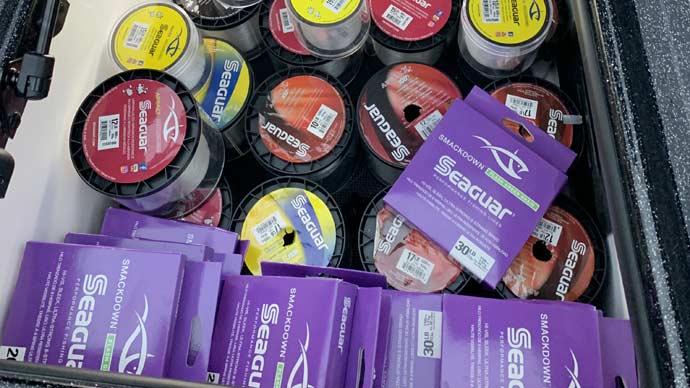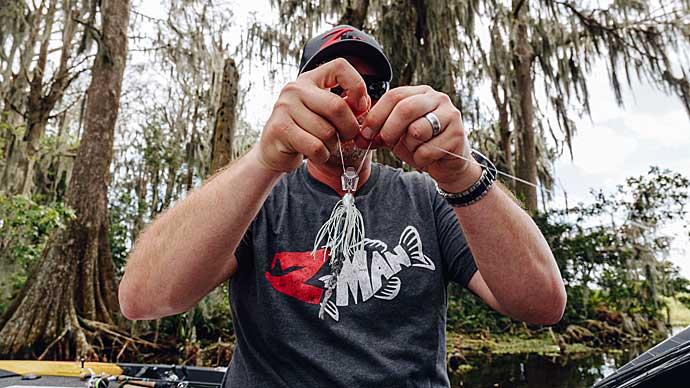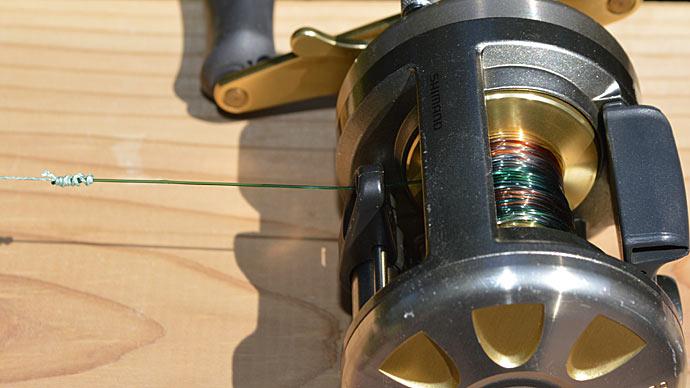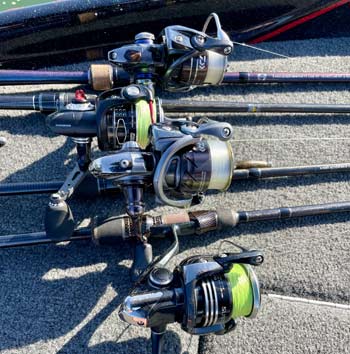
The pound test rating for a line is the standard when talking to fellow anglers, reading about fishing techniques, or watching videos. It’s been around for years, and there are many reasons why to select one size of line over another. The line size you use is critical for casting distance, how your lure will perform, and how easy it will be to detect bites.
Generally, thinner lines will cast further and allow your bait to dive deeper or fall faster; heavier lines naturally offer more strength and abrasion resistance. Picking the right line for the job is a delicate balance between getting the best performance from your gear and being strong enough to land a big bass.
That is relatively straightforward, but the tricky part is how much a pound test rating can be off from one brand to another. The solution is to look at the actual diameter, either inches or diameter, to get a true feel for what you are spooling onto your reel. It’s an excellent way to ensure you are using the same thing if you switch from line brands or follow recommendations from another angler.
A Diameter Comparison
To illustrate how different lines are from brand to brand, here is a look at six popular fluorocarbon lines. All sizes below are the diameters listed for a standard spool of 12-pound fluorocarbon that each retails for about the same price.
There is no standard for fishing line pound test ratings in America, which is evident in the following lines. As you can notice, the differences are truly measurable, and out of the six lines listed, there are five different diameters. While some differences between brands are slight, some 12lb test lines from one brand are equivalent to 15lb test lines for another, a significant discrepancy that can impact how your lure will perform.
- Sunline Super FC Sniper - .0112 inches
- Seaguar InvizX - .011 inches
- Daiwa J-Fluoro Samurai - .0117 inches
- Gamma Edge - .013 inches
- P-Line Tactical - .0117 inches
- Berkley Trilene 100% - .013 inches
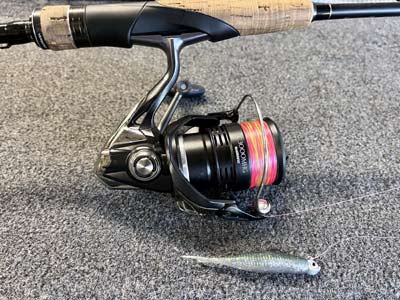
Braided lines are no different when it comes to the significant variance from brand to brand, and they are amplified even more because there are so many types of braided lines. The materials used in different lines play a role in how thin the line is, and so does the production method. Generally, four-strand braided lines are not as thin as eight-strand braids, which are tighter and become even thinner as they are woven together.
Then, you have to account for the materials used. Some braids, like Seaguar’s Japanese imported line PEX8, are made of IZANAS, an ultra-thin fiber that is exceptionally strong. Their 24-pound test is the same diameter as other 10-pound braided lines. As a result, a lure will act much differently depending on the diameter of your braided line, and anglers must pay attention when spooling up to ensure they have the right line for the job.
Why It Matters and Real-World Examples
Sometimes, your line diameter doesn't matter, such as when fishing heavy cover or topwater baits. The only difference is how far you can cast and how much strength you have to pull fish in. However, it can dramatically affect how your bait performs in other instances.
One of the main ways that line diameter is important and measurable is when using a diving lure like a crankbait or jerkbait. It’s pretty simple: the thinner the line, the deeper the bait will go. This can be crucial when fishing a crankbait, and you do your best to dive into the bottom to generate a reaction strike or get a jerkbait down as deep as possible to reach bass suspended in deep water. These are two reasons why paying attention to line diameter can help you catch more fish.
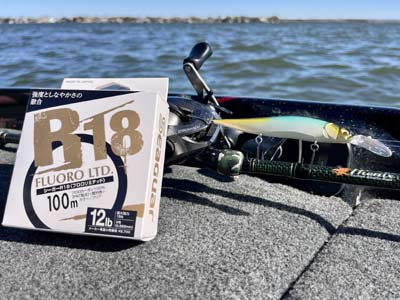
On the other side, there are times when going to a heavier line with a thicker diameter can stifle these diving depths. You may want that, too, if you are trying to make a shallow diving crankbait run a little shallower so it’s not digging into the bottom too much or making contact with grass. This is also why some anglers prefer a thicker line for jerkbaits in shallow water, to keep them higher in the water column. Switching to a line size or two thicker in diameter can affect a lure’s diving depth by as much as a foot, which can make a difference in getting certain fish to bite.
With a braided line, the diameter also determines how a lure will perform. Many anglers have switched to a braided mainline and fluorocarbon leader for finesse applications on spinning tackle, and a thinner line can make a difference in how quickly the bait reaches the bottom. Also, the thinner braid cuts through water, and you will not have as much of a bow in your line, leading to greater sensitivity in deep water. This can also lead to better hook sets with a braided line, and the thinner the braid, the more direct a connection you will have to your lure.
Line diameters are not discussed enough in fishing. The gold standard has always been the pound test printed on the spool and box of the line. This is a good starting point, but looking at the actual diameter is the best way to compare lines and ensure you have the perfect one for your needs.


